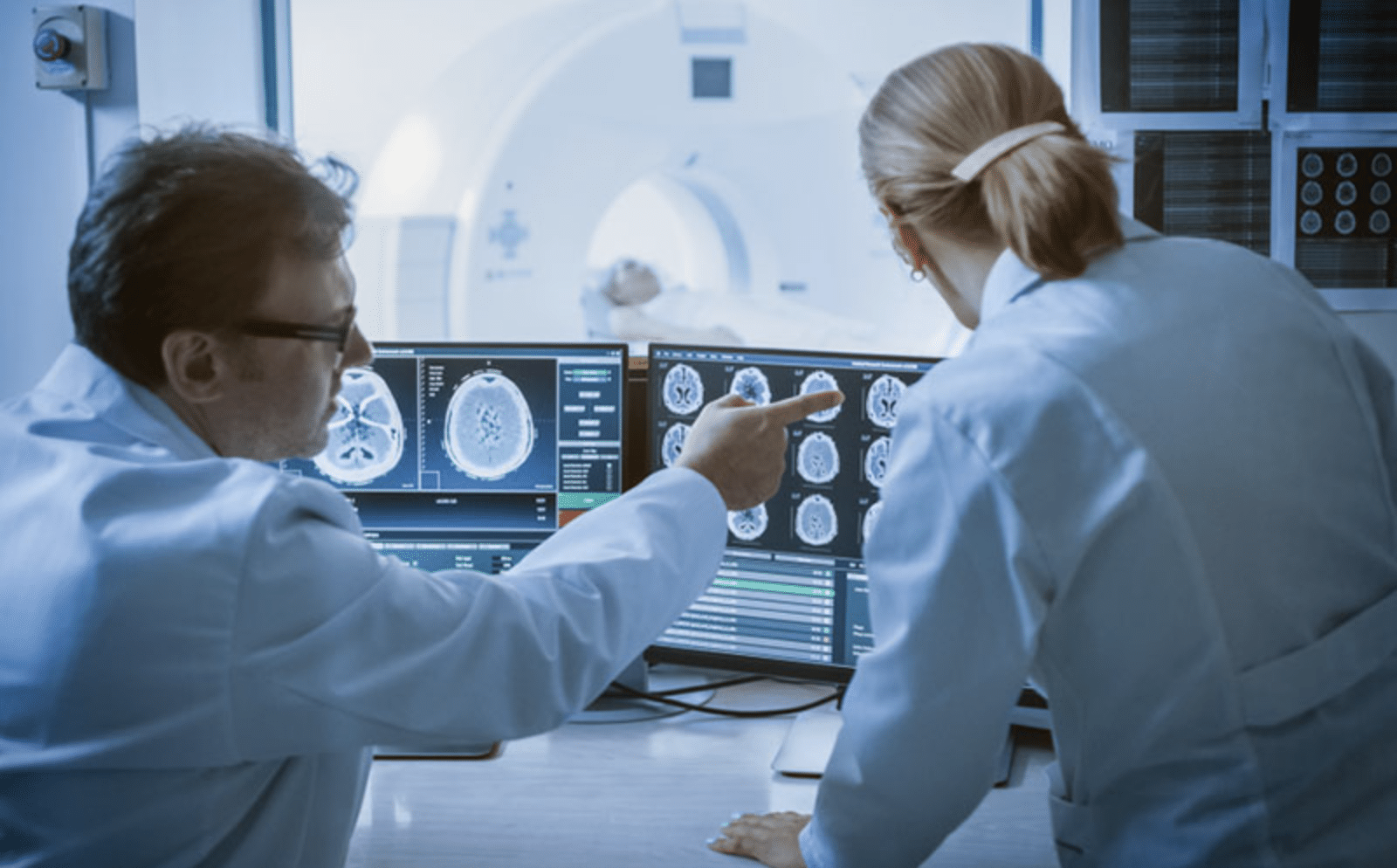Essential Tremor Diagnosis Criteria & Tests Explained
Essential tremor — also known as benign essential tremor — is a neurological disorder that causes involuntary rhythmic shaking in a particular body part. While essential tremor can affect different parts of your body, it most often occurs, or at least begins, in the hands. In many cases, it intensifies when you attempt to exercise basic fine motor skills, such as handling silverware or grasping a glass of water.
Tremors can be a symptom of several different diseases and disorders. For instance, serious neurological disorders such as Parkinson’s disease (PD) and multiple sclerosis (MS) are often associated with tremors. Essential tremor itself is not generally considered to be a life-threatening disorder, but it can be debilitating over time in more severe cases.
Essential tremor is a condition that may slowly progress over time, and a conclusive diagnosis of essential tremor can take time. A doctor will also look at a number of other factors before making a diagnosis, such as the severity of your tremor, its duration, and your family history. If essential tremor runs in your family history, it can also be called familial tremor or hereditary tremor.
In this article, we’ll go over the diagnostic criteria for essential tremor and discuss some of the tests that can help to identify the condition. Read from start to finish for an overview of the diagnostic process for essential tremor, or skip to the specific section that interests you by clicking on any of the links below.
Contents
Diagnosing Essential Tremor
Diagnosing essential tremor can be somewhat difficult. Part of the reason why is because there is no definitive test available that will indicate whether or not what you’re experiencing is essential tremor. Thus, the diagnostic process is largely aimed at ruling out other conditions and diseases that may be causing tremors, also known as a “differential diagnosis”.
Essential tremor tends to be a condition that begins to develop in people who are middle-aged. While essential tremor can affect you at virtually any age, it becomes more pronounced in people aged 40 and older. Cases where the patient is younger is less common, but still possible.
After a confirmed diagnosis of essential tremor, there are a variety of treatment options available. Pharmacotherapy and surgery are two common medical options for those suffering from essential tremor. But there are non-invasive, therapeutic options, such as physical therapy and tremor devices like Cala Trio.
Even though essential tremor isn’t generally considered to be a dangerous condition, symptoms gradually worsen over time to the point where it can be disabling, and interfere with basic day-to-day activities. So, before taking a look at the essential tremor diagnostic criteria, let’s go over the symptoms of the disorder.
Essential Tremor Symptoms
How exactly the symptoms of essential tremor manifest depend on the particular individual. However, the main symptoms of essential tremor may include the following:
- The involuntary shaking of one or more body parts. The tremor typically begins gradually in one of your upper extremities, like a hand, before developing in another extremity.
- Tremors that worsen with movement.
- Tremors that are provoked by emotional stress. Tremors may start off intermittently, occurring only during these emotional periods, before becoming persistent.
- Involuntary nodding and shaking of the head.
- Involuntary shaking in the voice, jaw, lips, or face.
- Unsteady walk (in rare cases).
The symptoms of essential tremor can get better or worse based on a number of different factors. For example, symptoms may be agitated by things such as emotional stress, fatigue, caffeine, hunger, or extreme temperatures. On the other hand, in some cases, symptoms may lessen if you’re at rest, such as if you’re sleeping.

Diagnostic Criteria
Seeing as researchers aren’t yet clear on what causes essential tremor when there’s no family history of it, the diagnostic criteria for the disorder has been a matter of some debate. But, during the diagnostic process for essential tremor, your doctor should generally take the following factors into account:
Type of tremor
Essential tremor is defined by the presence of action tremor. Action tremor it’s a type of tremor that occurs when you voluntarily contract a muscle. This means that the tremor might begin or intensify if you were trying to tie your shoes, for instance. Action tremors can be divided into three sub-categories: postural, isometric, and kinetic tremors.
Severity of tremor
When assessing your condition, your doctor will take into consideration the severity of your symptoms. This may include examining the frequency of your tremors, the number of body parts experiencing tremor, and the conditions that activate your tremors. Although it’s not life-threatening by itself, it can make daily tasks more burdensome and inconvenient, depending on the severity.
Family history
Family history is one of the most significant diagnostic criteria. If there’s a history of neurological conditions or diseases in your family, including tremors, then this suggests that a genetic factor may be at the root of your condition. Family history can have a major impact on whether you develop tremors, as it only takes one parent having a defective gene to pass on the condition to their children. In fact, if your parent has essential tremor, there’s a 50% chance that you or your children will inherit the condition.

Duration of tremor
A tremor must persist for some time in order to make an essential tremor diagnosis. When making a diagnosis, it’s important for the doctor to be as accurate as possible in identifying the age of onset. However, this can be a challenge because, in many cases, patients develop a tremor in early adulthood, but don’t seek medical attention until they’re 70 years of age or older. This is because of the condition’s progressive nature — symptoms may start out as subtle and manageable and then continue to get worse over the years.
Essential Tremor Diagnostic Tests
While there isn’t any test that can provide you with a definitive diagnosis of essential tremor, there are some tests that your doctor can use as diagnostic tools. By utilizing these tools, your doctor can reach a diagnosis that allows them to figure out the best course of essential tremor treatment for you. With that being said, here are few of the most common diagnostic tests for essential tremors.
Neurological Examination
Your doctor may subject you to a neurological examination in order to get a better grasp on the state of your nervous system, your condition, and its severity. During a neurological examination, a doctor will evaluate things like:
- Mental status
- Tendon reflexes
- Muscle strength and tone
- Motor function
- Posture, balance, and coordination
- Your ability to feel certain sensations
Laboratory Testing
If your doctor is unable to reach a conclusive diagnosis after looking over your family history and conducting a physical examination, then they may have you undergo one or more of the following tests:
- Standard electrolyte panel
- Thyroid function tests
- Blood urea nitrogen and creatinine levels
- Liver function tests
- Serum ceruloplasmin (to check for Wilson disease)
Imaging Studies
Your doctor may use certain imaging studies as diagnostic tools to help them reach a conclusive diagnosis. They may conduct a head computed tomography (CT) scan and magnetic resonance imaging (MRI) to help them rule out other conditions, and reach a differential diagnosis.

Performance Tests
Simple performance tests may be used as a diagnostic tool or to evaluate the severity of a particular essential tremor. To test your performance, your doctor may ask you to:
- Drink from a glass
- Draw a spiral
- Hold your arms out in front of you
- Write something using pen and paper
Essential Tremor Differential Diagnosis
Essential tremor can often be confused with other neurological conditions and diseases. That’s because stroke victims and those suffering from conditions like multiple sclerosis (MS) and brain injuries can exhibit tremors as well. Another condition in which patients experienced tremor is Parkinson’s disease, a nervous system disorder characterized by a persistent tremor, slowness of movement, and muscle stiffness.
To reach a diagnosis of essential tremor, your doctor will ask you questions, give you a physical exam, and possibly administer one or more of the tests described in the previous section. Since there’s still no specific test that can provide a definitive diagnosis of essential tremor, the diagnostic process is essentially a process of elimination. That means that it may take quite a bit of time before your doctor is able to reach a differential diagnosis, as you first must undergo tests to rule out other conditions like Parkinson’s disease and multiple sclerosis.
The Bottom Line
While essential tremor generally isn’t considered to be a life-threatening condition, it can still be very serious. If left untreated over time, essential tremor can progress and get worse, eventually becoming debilitating in some cases. You or your loved one should seek treatment as soon as you begin to notice symptoms.
If you’ve already been experiencing symptoms of essential tremor, consult with your doctor and discuss treatment options. Ask them about tremor devices like Cala Trio, which can provide relief and significantly reduce tremors in certain cases. Don’t let an essential tremor diagnosis get in the way of your day-to-day life — take action today by getting the tremor therapy you need.